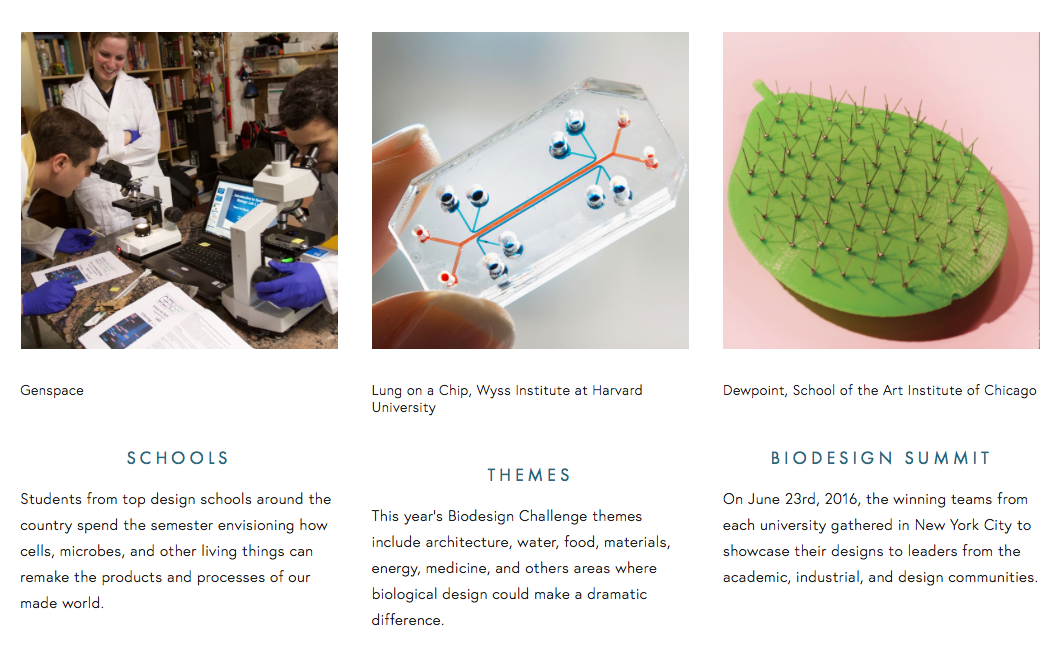What is the Biodesign Challenge?
The Biodesign Challenge offers art and design students the opportunity to envision future applications of biotechnology in a competition that highlights student work. Our organizers connect classrooms with a team of biologists and experts at GenSpace to guide the students as they develop their ideas.
At the end of the semester, the winning teams are invited to New York City to showcase their designs in front of members the academic, industrial, and design communities at the Biodesign Summit in June 2018. A great video on the challenge highlighting student projects can be found here: http://biodesignchallenge.org
How do I sign-up at Rutgers?

Why art and design?
Creativity and design play an integral role in the development of any new media. All products start as a design process before they’re brought to market. For an emerging technology, designers’ visions both anticipate and inspire new applications. Their visions drive the scientific community and also influence society’s desires around technologies.
Biotechnology is unique because it harnesses life. Life as a technology introduces new capabilities and raises new concerns. Biotechnology has brought about new medicines and greener modes of production. It has also created new risks. As the science finds its way into our world and our products, artists and designers need a full understanding of these concerns, so that when they are asked to design with biology, they do so creatively, thoughtfully, and ethically.
What are participating students saying?
“I learned that designing grounded in biodesign is not a limitation, but a lens through which I had never looked to consider the limitless possibilities that arise in combining biotech and design.”
– Student survey response, NYU
“I learned the importance of art in science and science in art. I learned that the two aren’t polar opposites but rather different mindsets that both want to create something wonderful.”
– Student survey response, RPI
“Never before had I had a sense of being able to create something truly new and relevant to a field (even when I had no clue of what I was doing at times). This is something that I had never been able to experience in a class.”
– Student survey response, UPenn